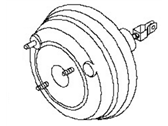×
- Hello
- Login or Register
- Quick Links
- Live Chat
- Track Order
- Parts Availability
- RMA
- Help Center
- Contact Us
- Shop for
- Nissan Parts
- Nissan Accessories

My Garage
My Account
Cart
Genuine Nissan Murano Brake Booster
Brake Power Booster- Select Vehicle by Model
- Select Vehicle by VIN
Select Vehicle by Model
orMake
Model
Year
Select Vehicle by VIN
For the most accurate results, select vehicle by your VIN (Vehicle Identification Number).
8 Brake Boosters found
Nissan Murano Booster Assy-Brake
Part Number: 47210-5AA0C$167.86 MSRP: $248.55You Save: $80.69 (33%)Ships in 1-3 Business DaysNissan Murano Booster Assy-Brake
Part Number: 47210-5AA0B$261.66 MSRP: $387.43You Save: $125.77 (33%)Ships in 1-3 Business DaysNissan Murano Booster Assy-Brake
Part Number: 47210-5AF0A$300.33 MSRP: $458.39You Save: $158.06 (35%)Ships in 1-3 Business DaysNissan Murano Booster Assy-Brake
Part Number: D7210-1AA0B$839.34 MSRP: $1204.92You Save: $365.58 (31%)Ships in 1-3 Business Days
Nissan Murano Brake Booster
If you need any OEM Nissan Murano Brake Booster, feel free to choose them out of our huge selection of genuine Nissan Murano Brake Booster. All our parts are offered at unbeatable prices and are supported by the manufacturer's warranty. In addition, we offer quick shipping to have your parts delivered to your door step in a matter of days.
Nissan Murano Brake Booster Parts Questions & Experts Answers
- Q: How to inspect and maintain the brake system, including the disc brakes, brake booster, and parking brake on Nissan Murano?A:For close-up pictures especially of the brake system, check the brakes every time the wheels are off or where there is reason to believe in a defect. Signs associated with brake system problems include an occurring of pulls to the side when the brake is pressed, noises such as squealing or scraping when the brakes are used, change in the brake pedal travel and thickness, pulsation and brake fluid leaks. Disc brake pads come with wear limiting sensors which emit a high pitched squealing or scraping sound when the pads are at the replacement level, hence must be replaced to enable freedom of further wear which would harm the discs. First, free the wheel lug nuts, then safely jack up and support the vehicle by means of jacks and jack stand and finally unbolt the wheels. Measuring the brake pad thickness, this can be done on the outer pad at both ends of the caliper and on the inner pad through the inspection hole in the caliper body and determine the thickness of the brake pads. If the thickness of any brake pad is less than the said dimension, then all the pads have to be changed. If this is not possible, take the caliper(s) and pads out for further examination, either using a brake cleaner wipe, or using a micrometer to double check thickness. Use the micrometer to check the disc thickness and service life; any disc measuring thinner than the specified minimum should be replaced; also look for scoring, gouging, or burned spots on the disc, and resurface it if such flaws are noticed. Before refitting the wheels, it is advisable to inspect all brake pipes and flexible hoses for signs of distortion, corrosion, cracks, and leakage to guarantee that they are not subjected to sharp surfaces or moving members. For the brake booster check, sit in the driver's seat and perform a series of tests: With the brake fully pressed down turn on the engine then check if the pedal goes down slightly; Press the brake pedal several times while the engine is running to determine if the travel distance changes; allow the brake pedal to be pressed down for a full 30 seconds after turning the engine off and check if it sinks or rises; and finally start the engine and then press the brake pedal several times to diagnose if the travel decreases. If the result is otherwise, then the brake booster should be repaired or changed out as necessary for correct function. For the parking brake, engage it with normal force, and make sure it goes notches to the required level if it does not, adjust it. Or park the vehicle on a steep gradient with your parking brake engaged and transaxle in Neutral and apply the emergency brake as a test to see if it will not move; if it rolls adjustment will be needed.
Related Nissan Murano Parts
Browse by Year
2024 Brake Booster 2023 Brake Booster 2022 Brake Booster 2021 Brake Booster 2020 Brake Booster 2019 Brake Booster 2018 Brake Booster 2017 Brake Booster 2016 Brake Booster 2015 Brake Booster 2014 Brake Booster 2013 Brake Booster 2012 Brake Booster 2011 Brake Booster 2010 Brake Booster 2009 Brake Booster 2008 Brake Booster 2007 Brake Booster 2006 Brake Booster 2005 Brake Booster 2004 Brake Booster 2003 Brake Booster












